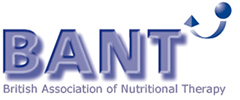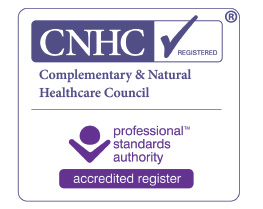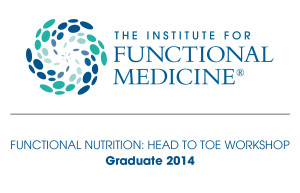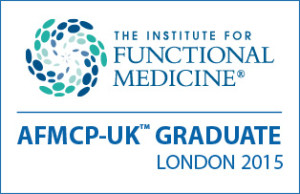Do you run for cover when the sun comes out or do you allow yourself to bask in the sun? We have been given the message to cover up from the sun and to use expensive sun cream, but are we missing out on any health benefits of sunshine and are there more natural ways to protect yourself?
This is the second and final part of a series on sunshine. In the previous post I described some of the health benefits and risks of sun exposure and of the use of sunscreen. In this post I will outline some more health benefits of sunshine and some ways you can protect yourself with a focus on food and supplements.
So why don’t we just get vitamin D from food or supplements and avoid the sunshine?
Natural sunlight, or daylight at least when sunlight is unavailable, is important to reset your circadian rhythm to allow for quality sleep (1). It is the blue visible light found in high intensity outdoors that is most important here to reset the circadian rhythm as it suppresses melatonin production and also boosts mood and cognitive function (2). Sleep in turn is vital for detoxifying your brain and thus reducing the risk of Alzheimer’s disease (3). Poor sleep is also associated with inflammation (4), cardiovascular disease, (5) blood sugar dysregulation (6), poor appetite control and weight gain (7), poor memory (8) and psychiatric disorders (9).
Research from 2017 shows that exposure of your skin to blue visible light from sunlight over a longer period of time is likely to cause you to lose fat from subcutaneous fat cells (10). This might be one of the ways in which we are programmed to store fat for the winter and to burn more fat in the summer and it is also of interest that fat cells also have their own circadian clocks that regulate metabolism (11), so might these clocks be entrained by blue light falling on the skin just as our brains are by blue light falling on the retina?
The researcher Stephanie Seneff has a theory that vitamin D sulphate, which can only be made from the sun rather than from vitamin D in food or supplements, protects you from heart disease over and above the protective effects of vitamin D alone, thus augmenting the importance of sunshine for heart health (12). UVA radiation also reduces heart disease risk by increasing nitric oxide production which reduces blood pressure (13).
Sunshine may increase not just serotonin to relieve winter depression, but dopamine response as well (14), increasing pleasure and motivation. Serotonin is also important for growing new nerve cells and has another interesting connection with sunlight since it is made from the amino acid tryptophan which can absorb sunlight for photosynthesis in plants (15). Another neurotransmitter that is increased by sunlight is glutamate, which aids learning and memory (16). β-endorphin is also released by exposure of the skin to UVB radiation (17, 18) and this can reduce pain and improve mood (19).
Many skin conditions such as psoriasis and vitiligo can improve in the sun (20), probably because the sun tends to reduce an overactive immune system in the case of psoriasis (21). The sun has been found to be more effective for psoriasis than UVB radiation alone (22) so there may be other wavelengths of radiation having a positive effect.
It has even been proposed that if eating plenty of chlorophyl rich food, such as leafy green vegetables, we may be able to directly make use of sunlight exposure on our skin to generate a small amount of ATP, the main currency of energy in the human body (23).
Since we evolved with some exposure to sunshine there may well be some other benefits not as yet understood.
Observational studies do indeed link sun avoidance with increased mortality (24) though the protective effects of sunbathing for melanoma risk are lost with sunburn (25) which does seem to increase the risk for melanoma (26). An observational study in Sweden found that “avoidance of sun exposure is a risk factor for death of a similar magnitude as smoking” (27).
So how can you enjoy the sunshine and reduce your risk of sun damage?
Firstly build up your sun exposure gradually and begin exposing as much of your skin as you can as soon as it is warm enough in the spring. Also avoid burning by having a short exposure every day when you can rather than lengthy exposures, at least until you build up a good tan. The melanin pigment that causes your tan protects you from UVB radiation (28) and UVB radiation is what leads to tanning, at doses lower than would burn you (29), though UVA can also contribute to the more rapid initial pigmentation (30) and in fact visible light can also contribute to tanning (31). You will hopefully have been supplementing vitamin D throughout the winter which may also be protective (32) until you build up more vitamin D from the sun exposure.
As with other hormetic processes, the dose makes the poison so if you need to get in the shade or cover up to avoid burning then do so, or use a large particle zinc oxide and titanium dioxide sunscreen if you cannot get out of the sun. Figure out how much time is safe for you to be in the sun. For me in the UK I know I will never burn in 20 minutes if I build up my exposure from the spring, but this may be less for you especially if your ancestors were from Northern Europe. You are aiming to gradually tan so that you do not ever need to burn when later on in the season you may be unable to avoid sun exposure at times. Remember than sunburn might manifest up to 24 hours after sun exposure (33) so wait a day to see how your exposure has effected you before the next exposure.
Be aware that although glass blocks out UVB so you will most likely not burn through glass, 50% of UVA will pass through most glass except for the laminated glass in most car windscreens (34). This could contribute to ageing of your skin without any of the benefits of vitamin D production.
Sunshine at midday will have a lower ratio of UVA to UVB light (35, 36) which is associated with reduced risk of melanoma and increased vitamin D production (37). Conversely although you can increase vitamin D production by using a sunbed (38) you will also receive a higher dose of the photoageing UVA radiation (39).
Dr. John Cannel of The Vitamin D Council claims that some of the vitamin D is formed in the oily layer on the surface of the skin and could be washed off with soap though he accepts that the evidence is not yet conclusive (40) and there is also some contradictory research (41). However it would do most people no harm to wash with soap only in the groin and under the armpits for 48 hours after sun exposure and that would be my advice until the evidence is stronger. It may even be that bathing in the sea strips off some of the oils on the surface of your skin and since the vitamin D that might be lost is anti-inflammatory could it be that bathing in saltwater could reduce the time you can safely spend in the sun?
Since the sebum on the surface of your skin contains low levels of the antioxidants CoQ10 and vitamin E that synergistically protect you from UV radiation (42, 43) as well as natural UV filter (44) it seems most likely that washing off the oily layers of your skin before sun exposure would also reduce your natural protection.
So can the food you eat protect you from solar radiation?
Here I will focus not on cosmetic formulations but on food and oral supplements that with regular intake over 10-12 weeks may increase the time you can spend in the sun without burning and may reduce any long-term damage to your skin.
Solar UV radiation can decrease antioxidants in your skin and in your blood and synergistic combinations of antioxidants (45) and polyphenols (46) may be the most protective although not all antioxidants will have a protective effect on the skin (47). Therefore the best place to begin is with a diet rich in plants of various colours which provide various antioxidants and phytochemicals such as polyphenols that have an antioxidant effect in the body. I have outlined this kind of a diet in more detail in The Colours That Heal You – Eating The Rainbow.
The antioxidants CoQ10, vitamin E and vitamin C can all be reduced in your skin by solar radiation (48). Topical CoQ10 has been shown to protect from photoaging (49) and an oral supplement of CoQ10 also has the same effect in reducing wrinkles and preserving smoothness of the skin (50). Vitamins C and E can reduce sunburn (51). Vitamin E can be found in oily fish, green leafy vegetables, egg yolks, nuts, seeds, avocado and extra virgin olive oil. Vitamin C is found in fresh fruits and vegetables such as citrus fruits, bell pepper, Brussels Sprouts, cauliflower, kiwi, strawberries, cantaloupe melon and papaya or from a supplement.
Lycopene from tomatoes is better absorbed from cooked tomato products and regular intake protects against sunburn (52, 53), as do carotenoids from orange and yellow fleshed fruits and vegetables and green leafy vegetables (54). Some of these carotenoids will be converted to vitamin A which is depleted in the skin by ultraviolet radiation and can help protect the skin from aging (55). However this conversion is often very poor and if you are not eating sources of preformed vitamin A such as butter, milk, eggs, organ meats or shellfish you may benefit from reading my post How To Maximise Vitamin A Even On a Vegan Diet where you can also find out how to increase carotenoid absorption.
Wild Alaskan sockeye salmon is rich in the pink carotenoid pigment astaxanthin (56) which can also be taken as a supplement and increases the time of sun exposure before sunburn (57). Oily fish will also provide omega-3 fatty acids which can help protect your skin from UV radiation (58).
Pine bark extract taken as a supplement for 12 weeks reduces photoaging (59). A daily dose of 250mg of a combination of rosemary extract and citrus bioflavonoids has been found to increase the time to sunburn by 34% after 8 weeks and by 56% after 12 weeks (60).
Green tea or green tea extract, milk thistle extract, curcumin from turmeric, resveratrol from red grapes, and grape seed extract may all reduce the risk of skin cancer and skin damage from solar radiation (61). In fact caffeine also has some protective effect (62) though I would take extra care to keep well hydrated in the sun if drinking tea or coffee. The anthocyanins in grape seed extract and in purple vegetables and fruits such as blueberries support collagen production and thus protect against photoageing (63). Green tea extract (64), quercetin (65), milk thistle extract (66), selenium and zinc (67) may be helpful in protecting specifically from the UVA radiation. Zinc is well absorbed from animal protein but is not well absorbed from plant foods (68, 69, 70) so I would advise vegans and maybe even vegetarians to test their red blood cell zinc levels and supplement if necessary. Selenium is found in fish and meat but vegetarians and vegans can eat 2-3 Brazil nuts a day to meet their selenium requirements.
Another antioxidant that protects your skin from ultraviolet radiation is melatonin (71) which as well as being your sleep hormone has an important role in skin protection (72) so if you are not sleeping well work with a practitioner to improve your sleep and make sure you have the necessary cofactors to make melatonin both in your brain and in your skin.
Sulforaphane from cruciferous vegetables is showing promise in skin protection in part by its hormetic effects (73) as is pomegranate (74). Cruciferous vegetables include cauliflower, cabbage, broccoli and broccoli sprouts, kale, Brussels sprouts, rocket, water cress, land cress, radish, horseradish, mizuna, Chinese leaf, bok choy, turnip, rutabaga, kohlrabi and shepherd’s purse.
Vitamin B3 as niacinamide can be protective topically (75) and might also be supportive as a supplement. Berberine reduces the collagen degrading effects of sunshine (76) that can lead to wrinkles but due to its effect on the gut you might prefer regular consumption of cocoa or cacao which helps reduce wrinkles and maintain skin elasticity after sun exposure (77). Topical phosphatidylserine has also been found to reduce wrinkles (78) though this is an expensive supplement to use topically and I have not yet seen research that the oral supplement will benefit your skin in this way.
Interestingly cholesterol in topical creams protects against UV damage whereas linoleic acid from flax oil, being a polyunsaturated fatty acid and thus very reactive, aggravates the damage from UV exposure (79). Some research has also found an association of increased saturated fat intake and total fat intake with reduced wrinkles (80) and again it may be the stability of saturated fat that might be providing extra protection, though the research does not prove that saturated fat causes less wrinkles to be formed.
Sunshine can break down folate (81) which is essential for healthy pregnancy, for cognitive function, gut health, sperm health, detoxification, red blood cell production and immune function. The melanin in darker or more tanned skin helps to protect against folate breakdown by solar radiation (82). So after sun exposure be sure to consume plenty of high folate foods such as green leafy vegetables, avocado, liver, eggs, citrus fruit, beans, lentils, eggs, broccoli and asparagus.
Since sunburn is an inflammatory response (83) and inflammation is also associated with photoageing and melanoma (84, 85) I also recommend reducing inflammation as explained in my series 10 Steps to Reduce Inflammation.
Sunglasses may protect your eyes from UV radiation but we did not evolve wearing sunglasses and I wonder if their overuse may interrupt the signalling we receive from natural light that sets our circadian rhythms, as darker sunglasses have been found to be helpful for shift workers to set a circadian rhythm that is not entrained by natural light (86). It may be that poor antioxidant status and cortisol imbalances (which may affect pupil constriction that would reduce light damage) may create a need for artificial protection in the form of sunglasses in some people, but this might also offer a false sense of security and even confuse the body as to what the real conditions are in the environment. I would like to see more convincing research on sunglasses as all I can currently offer here is my speculation.
Remember to also protect your eyes from the blue light in sunlight, especially if you spend time on a computer, laptop, phone or other device since these also emit blue light. You can find out more about this by reading How to Protect Your Eyes. Are Phones a Risk? and More Tips on How to Protect your Eyes from Blue Light where I discuss the role of lutein in protecting your eyes from blue light and also your skin from UV radiation. Vitamin C is also degraded in the lens of your eye by UVA radiation (87) which is another reason to make sure you are getting enough of it.
SUMMARY:
- Aside from all of the benefits of increased vitamin D production I covered in the previous video, sun exposure helps to set circadian rhythms to improve sleep and thus improve memory and reduce your risk of Alzheimer’s disease, heart disease, type 2 diabetes, obesity and psychiatric disorders.
- Sun exposure reduces blood pressure, can benefit psoriasis and vitiligo, and improves mood.
- Try to build up a tan with short exposures beginning in the spring.
- Sunshine at noon may actually be safer for a short exposure to avoid burning.
- Until there is more evidence I recommend avoiding using soap when showering for 48 hours after sun exposure except in the groin and under the armpits and also to avoid soaping all over your body before sun exposure.
- Diet and supplements such as polyphenols and antioxidants may play a role in protecting your skin from sunshine and reducing burning, aging and melanoma risk.
I hope this information will help you to safely enjoy the sun and benefit from its mood-lifting and health-giving properties.
I personally have found that, although I tan quite well anyway, I tan better now than when my diet was more inflammatory. I am curious to know if you have noticed the effects of diet or supplements on your ability to benefit from sunshine without burning as easily. Please leave your comments below.
Learn more about my work in London and Totnes, or find out about online consultations.
SIGN UP TO THE NEWSLETTER TO BE NOTIFIED WHEN EACH NEW POST IS RELEASED.
Related posts:
The Healing Power of the Sun – Should You Use Sunscreen?
Hormesis – Do Toxins Make You Stronger – Part 1
Hormesis – Do Toxins Make You Stronger – Part 2
The Colours That Heal You – Eating The Rainbow
How To Maximise Vitamin A Even On a Vegan Diet
10 Steps To Reduce Inflammation – What is Inflammation and Why Reduce Inflammation?






I blog often and I really appreciate your information. Your article has truly peaked my interest. Rebekkah Hewet Erda
Good way of describing, and nice article to obtain facts regarding my presentation subject matter, which i am going to convey in university. Lela Syd Odo